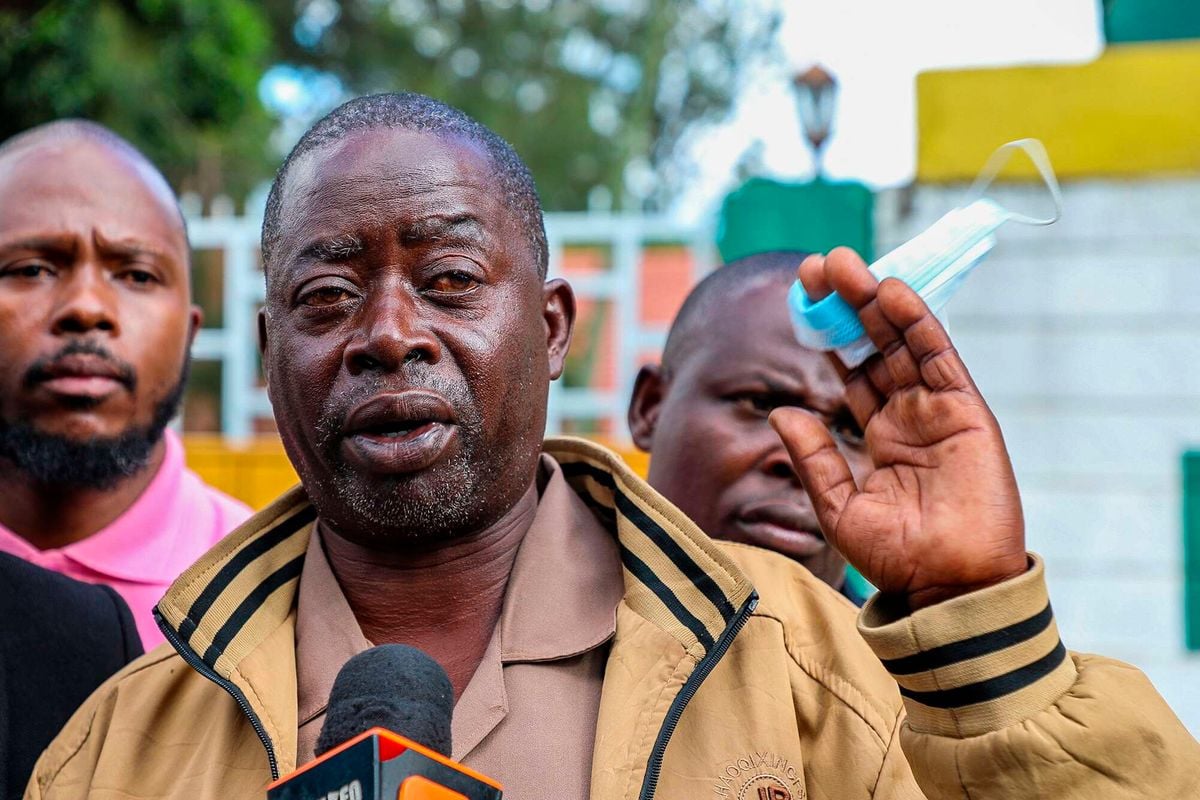Kenya is witnessing a resurgence of widespread protests, dubbed Maandamano Season 2, a powerful echo of the June 2024 anti-Finance Bill demonstrations. Sparked by the brutal death of 31-year-old teacher and blogger Albert Omondi Ojwang in police custody, these protests shifted focus from economic grievances to a searing demand for justice against police brutality. The organic movement returning to the streets was aptly captured by an X user going by Chris (@X_ChrisM) who proclaimed, “Kama hizi ndio numbers za maandamano S02E01 then the next ones will be huge asf. Lazima tutokee buana. Fomo inanimalisa,” captured the growing momentum and public fervor. However, the protests faced challenges from a lackluster government response, ironic police crackdowns, and internal activist rivalries, all while new CCTV footage from Mbagathi Hospital deepened public outrage by contradicting police narratives, fueling calls for fresh demonstrations.
Protests Erupt Over Ojwang’s Death
The death of Albert Ojwang, arrested in Homa Bay on June 7, 2025, for allegedly defaming Deputy Inspector General of Police Eliud Lagat on social media, ignited protests across Nairobi and beyond. Transferred over 350 kilometers to Nairobi’s Central Police Station, Ojwang was found dead on June 8, with police initially claiming he sustained fatal injuries by hitting his head against a cell wall. An autopsy, however, revealed head injuries, neck compression, and multiple soft tissue traumas, pointing to torture. On June 12, hundreds of youths stormed Nairobi’s central business district, blocking roads like Harambee Avenue and chanting “Lagat must go!” and “No justice, no budget!” Protests also spread to western Kenya and the Rift Valley, with businesses shuttered amid fears of looting. The online community amplified the movement, with hashtags like #JusticeForAlbertOjwang and #EndPoliceBrutality trending on X, and emotional posts, including a viral video of activist Eric Omondi consoling Ojwang’s father, Meshack Opiyo, driving donations for the family.
Newly released CCTV footage from Mbagathi Hospital, aired by Citizen TV on June 14, escalated tensions further. The footage, showing police officers taking Ojwang’s body to the hospital at 1:35 a.m. on June 8—contradicting the timeline provided by Directorate of Criminal Investigations (DCI) boss Mohamed Amin during a Senate hearing—revealed officers lingering for 20 minutes before wheeling Ojwang to the emergency wing, where he was pronounced dead. Kenyans, enraged by the apparent lack of urgency and suspicions of a cover-up, flooded social media with condemnation, with posts like “This was a cold-blooded, state-sanctioned execution” gaining traction. The footage, coupled with the Independent Policing Oversight Authority’s (IPOA) revelation that CCTV at Central Police Station was tampered with hours after Ojwang’s death, undermined police credibility and prompted calls for new protests, with dates like June 19 and 26 floated on X.
Government’s Hollow Response and Half-truths from the Police
The government’s response to the crisis was widely criticized as uncoordinated and insincere. Inspector General Douglas Kanja issued an apology for misleading claims about Ojwang’s injuries and interdicted officers at Central Police Station, including Officer Commanding Station Samson Talam and Constable James Mukhwana, who now officially face murder charges. However, these actions have been dismissed as scapegoating junior officers by activists like Hussein Khalid of Vocal Africa.
President William Ruto condemned Ojwang’s death as “heartbreaking” and promised cooperation with IPOA, but his administration’s failure to suspend senior officials like Lagat, despite public demands, deepened distrust. The Senate’s probing of why police bypassed the closer Kenyatta National Hospital for Mbagathi, where Ojwang arrived “dead, bruised, and cold,” further exposed inconsistencies in the police narrative.
Ironically, police deployed tear gas, rubber bullets, and live ammunition to disperse protesters demanding an end to police brutality, replicating the heavy-handed tactics criticized in 2024. On June 9 and 12, Nairobi saw violent clashes, with vehicles set ablaze and at least three protesters wounded by rubber bullets. This response, coupled with the tampering of CCTV footage, reinforced perceptions of impunity, as junior officers faced consequences while senior figures remained untouched. The government’s inaction on systemic reforms, alongside nearly 160 reported extrajudicial killings in 2024 per the Kenya Human Rights Commission, fueled public anger, with activists like Ndungi Githuku highlighting unresolved issues like joblessness and state violence.
Activist Rivalries Threaten Unity
The protests’ momentum risked derailment due to internal conflicts among activists, mirroring the 2024 movement’s fragmentation. A public feud between Eric Omondi and Hanifa Farsafi over fundraising for Ojwang’s family sowed confusion. Hanifa shared a paybill (4699944, Albert Omondi Ojwang Fund), claiming family endorsement, while Eric launched a separate paybill (247247, The Late Albert Ojwang Fund) under his Sisi Kwa Sisi initiative, aiming to raise KSh 10 million. Hanifa accused Eric of exploiting the family’s grief for “ulterior motives,” while Eric persisted, urging donations to his fund. This clash, with Mercy Masai’s name tangentially dragged into protest-related posts, echoed 2024’s ego-driven disputes that saw activists accused of “selling out.” Kenyans on X demanded transparency, fearing the family would be shortchanged, a concern that threatened to shift focus from justice to personal agendas.
Protest Tactics and Future Prospects
Maandamano Season 2 is adopting tactics from 2024’s youth-led, decentralized protests, including sit-ins, road blockades, and social media mobilization. Protesters occupied key Nairobi areas like Jeevanjee Gardens and Parliament Buildings, chanting slogans like “Beba maji, simu na flag” (carry water, phone, and flag). The movement’s online presence, amplified by Chris’s tweet predicting larger protests, underscored the role of X in sustaining momentum.
The suspension of Ojwang’s X account is also part of a series of actions meant to cover up the death,only that we the people are seeing it in real time. The CCTV footage’s release, contradicting senior police testimonies before the senatr last week, has radicalized public sentiment, with new demonstration dates gaining traction online. Yet, the movement’s success hinges on overcoming activist rivalries and maintaining focus on systemic reform, lest it suffer the same fate as 2024’s protests, which lost steam amid internal divisions.
Written by Otieno Arudo



